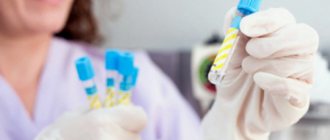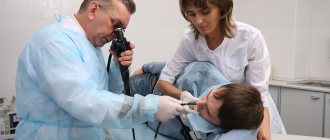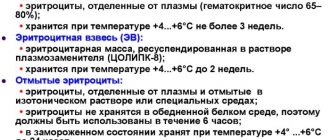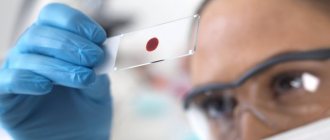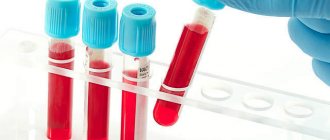A general blood test is the most common way to diagnose any disease. When a person goes to the clinic for examination, the doctor will definitely give him a referral to donate blood. This is done to see if there are any abnormalities in the patient's body. You should know that only a medical professional can decipher the analysis. But you can roughly evaluate the results of the analysis yourself if you know the norms for the content of certain blood components.
Indications
When is a person given a referral for a blood test?
- To make a diagnosis and determine a treatment regimen for the patient, the doctor gives a referral for a general blood test. The doctor also determines where the biological material is taken from.
- If a person is scheduled to be admitted to a hospital, then he will definitely need to submit the material for research to the laboratory.
- Before vaccination, a referral for a general blood test is also issued. Where biological material is taken from children will be discussed below.
- Before prescribing a course of treatment with medications, the patient should donate blood for testing in the laboratory. This is done in order to identify any contraindications for taking certain medications.
Who is being tested for coronavirus now?
In Russia, certain population groups are subject to testing for COVID-19:
- people with ARVI symptoms who have crossed the border in the last 2 weeks or met with people who came from abroad;
- patients with pneumonia;
- people over 60 years of age who have developed signs of a respiratory infection;
- patients with manifestations of ARVI and the presence of chronic diseases;
- healthy citizens who have returned from another country within the last 14 days;
- patients with signs of ARVI.
These categories are arranged in descending order of their importance: first, testing is carried out for representatives of the first risk group, then the second, etc. The final decision on whether to send a patient for testing is made by the doctor.
“1 million 360 thousand studies have been carried out in Russia,” said Deputy Prime Minister Tatyana Golikova on April 13 at a meeting with the president.
Is it possible to take a coronavirus test on your own?
From April 6, the Center for Molecular Diagnostics of Rospotrebnadzor begins testing everyone without a doctor’s prescription. Such information is indicated on the official website of the organization.
For the study, Rospotrebnadzor uses a modern test system that meets European requirements. The service is provided on a commercial basis. It is available only to residents of Moscow and the Moscow region.
Dear reader, we have collected all the most important and up-to-date information about COVID-19 on 1 page - the main thing about coronavirus.
Helpful information
The procedure is carried out in compliance with all self-isolation requirements. An employee goes to a person’s home, brings a container for collecting material, instructs how to properly take a swab from the oropharynx, and then takes the container to the laboratory. The result is sent via email in 1-2 days.
Private laboratories (Helix, Gemotest) received permission to examine patients for coronavirus. Here anyone can test themselves if they wish. There is an important nuance: to do this, you need to leave the house, which for Muscovites is regarded as a violation of the conditions of self-isolation - taking a test does not equate to emergency medical care.
Is it worth doing a paid analysis?
The need for such a procedure is highly questionable for a number of reasons:
- Price. According to RIA Novosti, the cost of the Rospotrebnadzor test is 1,250 rubles. In private laboratories the procedure will be even more expensive.
- Long wait. To take a smear, you need to make an appointment several days or even weeks in advance, so by the time your turn arrives, the test may not be relevant.
- Risk of infection along the way. You need to somehow get to the laboratory, so there is a risk of coming into contact with the virus on the street or in transport.
WHO states that the best way to avoid infection is to strictly observe self-isolation. If symptoms of ARVI appear, you need to call a doctor who will tell you what to do next and, if necessary, prescribe a test for COVID-19.
Blood test: where is the material taken from and how is the collection carried out?
Typically, blood collection for laboratory analysis is taken from the ring finger. But there are options when blood will need to be donated from a vein. This need arises if extensive research is needed. Where a general blood test is taken from in adults is determined by the attending physician.
The collection of biological material for the laboratory is done according to the following algorithm. The finger is lubricated with an alcohol solution. Next, the laboratory assistant makes a puncture and collects material into a tube. The blood is then transferred into a glass flask. A small amount of it is left on a special glass. This is done for the purpose of a detailed study of the material and in order to do a general blood test. Where else do they get the material from?
When it is necessary to take blood from a patient’s vein for analysis, the person’s forearm is tied with a special tourniquet. The skin on the arm at the elbow is lubricated with an alcohol solution. Then a needle is inserted into the vein. Next, the material is taken, which is also placed in a special flask, and a small amount is taken on glass. There are statistics that a person donates blood from his finger about 20 times during his life.
Preparation” for research
Before donating biomaterial, the patient needs to prepare:
- 12 (at most)
 hours before visiting the clinic, refuse to eat. Tea, coffee and juices are considered food. Drinking water is not prohibited. In exceptional cases, you can eat an apple or drink unsweetened tea 60 minutes before donating blood.
hours before visiting the clinic, refuse to eat. Tea, coffee and juices are considered food. Drinking water is not prohibited. In exceptional cases, you can eat an apple or drink unsweetened tea 60 minutes before donating blood. - Stop taking antibiotics and other medications 2 weeks before the test.
- Before the procedure (30 minutes before), avoid hot baths, psychological stress and physical exercise.
- Do not smoke on the day of submitting your biomaterial.
- If you have an ultrasound, x-ray, physiotherapy, rectal examination or reflexology scheduled on the day of your blood draw, donate blood first. The listed procedures may distort the initial indicators.
The ideal time to visit a laboratory technician is from 7 to 12 am. This is the period immediately after sleep, when hunger is not yet so noticeable. In addition, indicators can vary significantly throughout the day.
General blood test in children. Where do they get material from infants? Features of this study
It should be remembered that the values of the blood tested in infants differ from the norms of an adult.
The first sampling is prescribed for small children at the age of three months. It is believed that in this age period children are at risk of developing a disease such as iron deficiency anemia. Therefore, to identify the development of this disease, a referral is given for a general blood test in the infant. The pediatrician indicates where the material is taken from. Here the doctor pays attention to the level of hemoglobin and red blood cells.
Also, from three months, the child needs to be vaccinated. For it to be successful, the child must be healthy. This analysis makes it possible to find out whether all indicators are normal.
Where to submit?
Today, as experts from responsible authorities and organizations note, all hygiene and epidemiology centers located in large cities are equipped with coronavirus tests. You shouldn’t look for rapid tests in pharmacies - they simply aren’t there.
Testing for infection caused by COVID-19 is carried out after visiting a doctor and if all the conditions specified above are met. You cannot get tested in a regular clinic, because the clinics are not equipped with rapid tests. And in general, it is better for a person who has become infected with a new infection not to leave the house on their own, nor to visit the clinic in order to avoid the spread of the virus.
If coronavirus is suspected, a person is hospitalized in the infectious diseases department of a hospital. Moreover, the severity of the condition does not matter. And all the necessary research will be carried out there. Completion time: from 2–4 hours to one day.
Analysis in children
For older children, you need to take a blood test on an empty stomach. But for infants, this recommendation may not be followed.
The material is collected by a laboratory assistant wearing sterile gloves using disposable instruments. Blood in children, as in adults, is taken from the fourth finger of the hand, counting from the thumb. First, a sample is taken to study the level of hemoglobin in the blood and ESR. Then material is collected to determine the number of leukocytes and red blood cells in the blood. Next, the smears are placed on a glass slide. They are needed to study cellular composition.
It happens that parents get nervous when their child is scheduled for a procedure such as blood sampling for analysis. This does not need to be done, since the emotional state of an adult is transferred to the baby and he may start crying. Therefore, parents are advised not to be nervous and come to the test in a calm state. If necessary, the laboratory technician will advise on how to hold the baby and where the blood is taken from during a general blood test.
Why donate blood for a general test?
Human blood is made up of many different components. If a bacterial or viral infection enters the body, the amount of substances may change. To confirm or refute the initial diagnosis, the doctor takes the material for a general analysis (GA). The behavior of hormones and enzymes is also revealed, on the basis of which the doctor diagnoses any disease.
Indications for donating blood in children are:
- complaints about symptoms that the child had not previously shown;
- complications of diseases that last a long time;
- determination of the activity of drugs previously prescribed for treatment;
- handing over material before vaccination or entering kindergarten.
The reasons why a child undergoes a general test includes disease prevention. This check is done once a year.
In adults, such a study is not necessary, since a person’s immunity and protective forces are already formed by this age. The exception is patients with reduced immunity. More often, testing is carried out when applying for a new job, passing a medical examination and pregnancy.
Indicators
What does each indicator mean? Let's look at them:
- Red blood cells are red cells in human blood. Their function is that they deliver oxygen from the lungs to all organs and tissues.
- ESR. This abbreviation stands for erythrocyte sedimentation rate. These data relate to one of the main parameters by which the presence or absence of an inflammatory process in the body can be determined.
- Leukocytes. If their level is elevated, it means that there is some kind of infection or inflammatory process in the body. This may also mean that there are tumor processes, for example, oncology. White blood cells are a component of the immune system. If their level becomes higher, it means that the body begins to fight some disease. Leukocytes are white blood cells.
- Platelets. These cells are considered the smallest. They are colorless and are responsible for blood clotting. Their number may change during the day and after physical activity.
Coronavirus, RNA (SARS-CoV-2, PCR) swab, quality.
Information about coronavirus testing
Qualitative determination of RNA of beta-coronavirus SARS-CoV-2 (the causative agent of COVID-19) in scrapings of oropharyngeal cells using real-time PCR.
SARS-CoV-2 is an RNA beta coronavirus of the Coronaviridae family that was discovered in late 2020 in China. It can cause acute respiratory infectious disease COVID-19 in humans (COronaVIrus Disease 2019).
As a rule, the infectious process begins after the virus penetrates the epithelial cells lining the mucous membranes of the upper respiratory tract. In infected cells, active replication of the virus begins - a multiple increase in the number of copies of viral particles, or virions. New virions emerge from the affected cells and infect an increasing number of healthy cells, not only of the upper, but also of the lower respiratory tract. Including possible damage to type II alveolar cells, which determines the development of pneumonia.
SARS-CoV-2 virions are able to penetrate cells on the surface of which the membrane protein angiotensin-converting enzyme type II (ACE2) is present. For the virus, ACE2 serves as a receptor to which glycoprotein “spikes” (which include the Spike or S protein) located on the surface of viral particles bind. ACE2 receptors are present on the cell membranes of the organs of the respiratory and central nervous systems, esophagus, ileum, kidneys, bladder, and heart. The new coronavirus is capable of infecting brain cells, which is associated with a complete loss of smell in the early stages of the disease in some patients. According to some data, the virus is also able to penetrate cells whose membrane contains the CD147 protein.
The polymerase chain reaction, or PCR, method makes it possible to detect genetic material – coronavirus RNA – in a small number of epithelial cells of the upper respiratory tract in a fairly short time. A positive result (detection of viral ribonucleic acid) indicates that a virus is present in the person’s upper respiratory tract and that the person poses a danger to others.
SARS-CoV-2 infection can be asymptomatic (up to 50% of cases), in mild and severe forms. In the latter case, the development of acute respiratory syndrome (Severe Acute Respiratory Syndrome, SARS) is possible against the background of bilateral pneumonia. The incubation period lasts 2–14 days (usually 5–7 days). After which the patient develops symptoms of acute respiratory viral infection (ARVI).
All people infected with coronavirus, even those whose infection occurs in an erased or asymptomatic form, are a source of infection already in the first days after infection. Since they release viral particles into the environment with exhaled air, when talking, coughing, sneezing. On average, viral shedding lasts about 20 days, but in some cases it can last longer than a month.
It is important to remember that the pathogenesis of the new coronavirus infection has not yet been sufficiently studied. And even in patients whose infection occurs in mild or erased forms, acute respiratory syndrome may develop against the background of pneumonia.
Some important points
There are certain norms for the level of the above cells in the blood. They are usually indicated on the test result form. Therefore, the patient himself can determine whether the content of certain cells is normal. But only a doctor can give an accurate interpretation of the analysis.
Patients who are afraid to donate material from a finger prick for some reason may ask their doctor whether it is possible to take a general blood test from a vein.
And if I want to know if I had coronavirus, will the test show this?
Until recently, there were no tests in Russia that could confirm the fact of a coronavirus infection. The standard PCR method is not suitable for this - it can detect the virus only when it is directly present in the body. To retrospectively find out about the fact of infection, there is a test for antibodies to the virus (IgG).
Deputy Prime Minister Tatyana Golikova on April 13, at a meeting with President Vladimir Putin, said that antibody tests would soon appear in Moscow and then be distributed to the regions.
First of all, the new testing systems will be used for doctors to understand which of them managed to survive the coronavirus infection in an erased form. The Deputy Prime Minister did not say whether the tests will be available to everyone.
Dear reader, we have collected all the most important and up-to-date information about COVID-19 on 1 page - the main thing about coronavirus.
Helpful information


